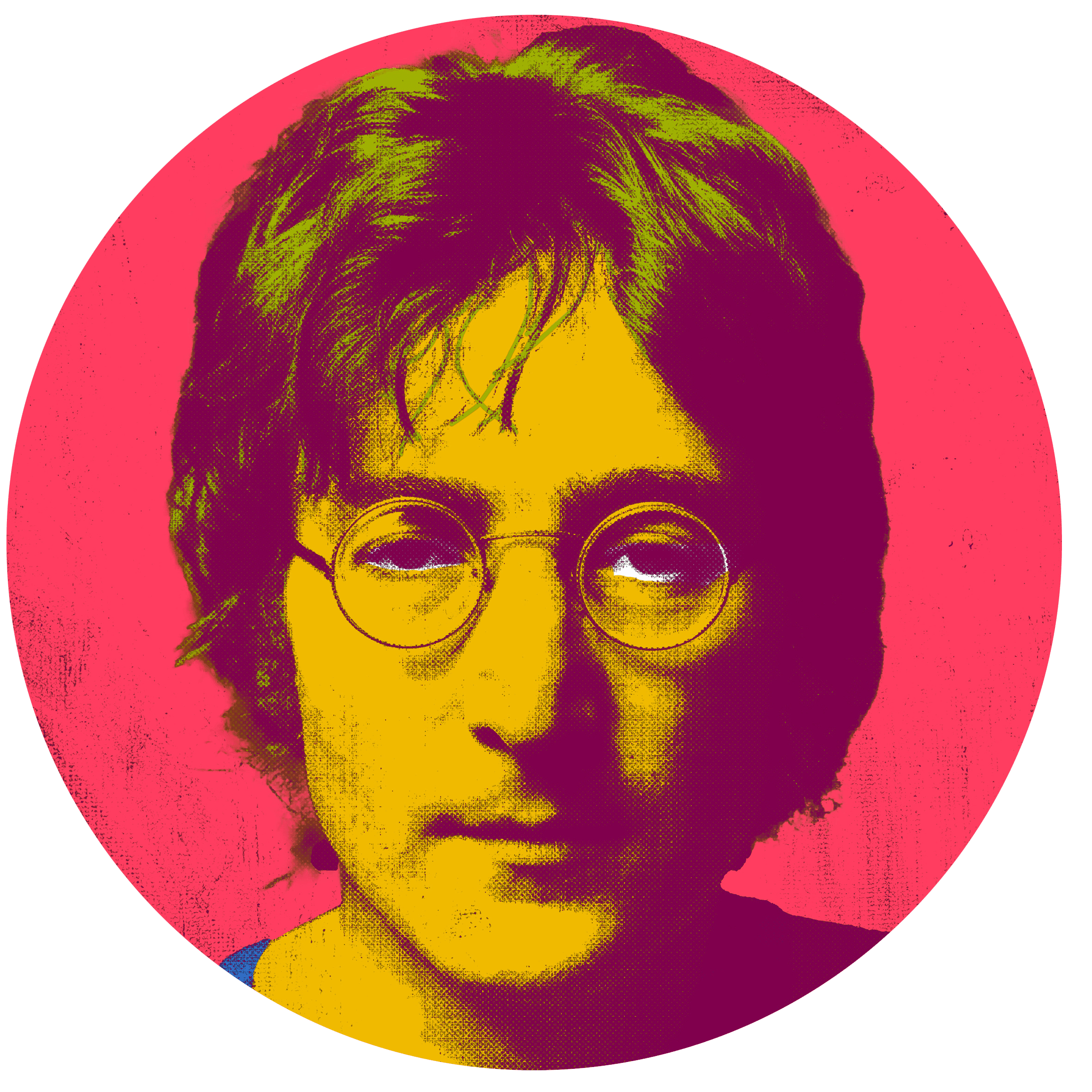John Lennon’s hairstyles were as revolutionary as his music. From the early ’60s to the end of his life, his hair told a story of rebellion, experimentation, and cultural influence.
The Teddy Boy Era

Before The Beatles became a global sensation, Lennon embraced the “Teddy Boy” look. This style, popular in the late 1950s, featured slicked-back hair with a pronounced quiff, often accompanied by sideburns. It was a nod to the American rock ‘n’ roll scene, reflecting youthful defiance and a love for genres like rock and jazz. (agnautacouture.com)
The Mop-Top Phenomenon

The early 1960s marked the rise of The Beatles’ iconic mop-top hairstyle. This straight-cut, collar-length look, characterized by its uniform length and fringe, became synonymous with the band’s image. It was a stark contrast to the conservative styles of the time and symbolized youthful rebellion. The mop-top wasn’t just a haircut; it was a cultural statement that resonated with a generation eager for change. (liverpoolmuseums.org.uk)
Psychedelic Shags and Mustaches
As the 1960s progressed, so did Lennon’s hairstyles. During the “Sgt. Pepper’s Lonely Hearts Club Band” era, he sported longer, shaggier hair paired with a mustache. This look mirrored the psychedelic culture of the time, reflecting a more experimental and avant-garde approach to music and art. The mustache, in particular, marked a departure from the clean-shaven image of The Beatles’ earlier years, signaling maturity and a deeper connection to the counterculture movement. (vogue.com)
The Jesus Look

In the late 1960s, Lennon adopted what many referred to as the “Jesus look.” He grew his hair and beard long, embodying the hippie ethos of peace and love. This period coincided with his activism against the Vietnam War and his advocacy for peace, making his appearance a visual representation of his ideals. The long hair and beard challenged societal norms and became emblematic of the era’s counterculture. (beatlesbible.com)
The Short-Lived Short Hair

In 1966, Lennon took on a role in the film “How I Won the War,” which required him to cut his hair short. This temporary change surprised fans and media alike, as it contrasted sharply with his previously longer locks. The short hair didn’t last long, but it showcased Lennon’s willingness to experiment and adapt his image as needed.
The Bed-In and Beyond
By 1969, during the famous Bed-In for Peace with Yoko Ono, Lennon’s hair had grown long again, accompanied by a full beard. This look became iconic, symbolizing his commitment to peace and his break from traditional celebrity appearances. The unkempt hair and beard were deliberate choices, reflecting a desire to reject societal expectations and embrace a more natural, authentic self. (mrporter.com)
Legacy and Influence
Lennon’s ever-evolving hairstyles were more than personal choices; they influenced fashion trends worldwide. From the widespread adoption of the mop-top to the acceptance of longer hair on men, his styles challenged and changed societal norms. Even today, elements of his various looks continue to inspire fashion and music enthusiasts, underscoring the enduring impact of his style evolution. (gq-magazine.co.uk)
Embracing the Lennon Look Today
For those inspired by Lennon’s style and seeking to incorporate elements of his iconic looks into their wardrobe, poprocktee.com offers a curated selection of John Lennon-themed apparel. From classic graphic tees featuring his likeness to designs inspired by his music and activism, there’s something for every fan. Explore the collection and let Lennon’s timeless style influence your fashion choices today.
John Lennon’s hairstyles were more than mere fashion statements; they were reflections of his evolving identity and the cultural shifts of his time. Each phase told a story, leaving an indelible mark on fashion and society.
